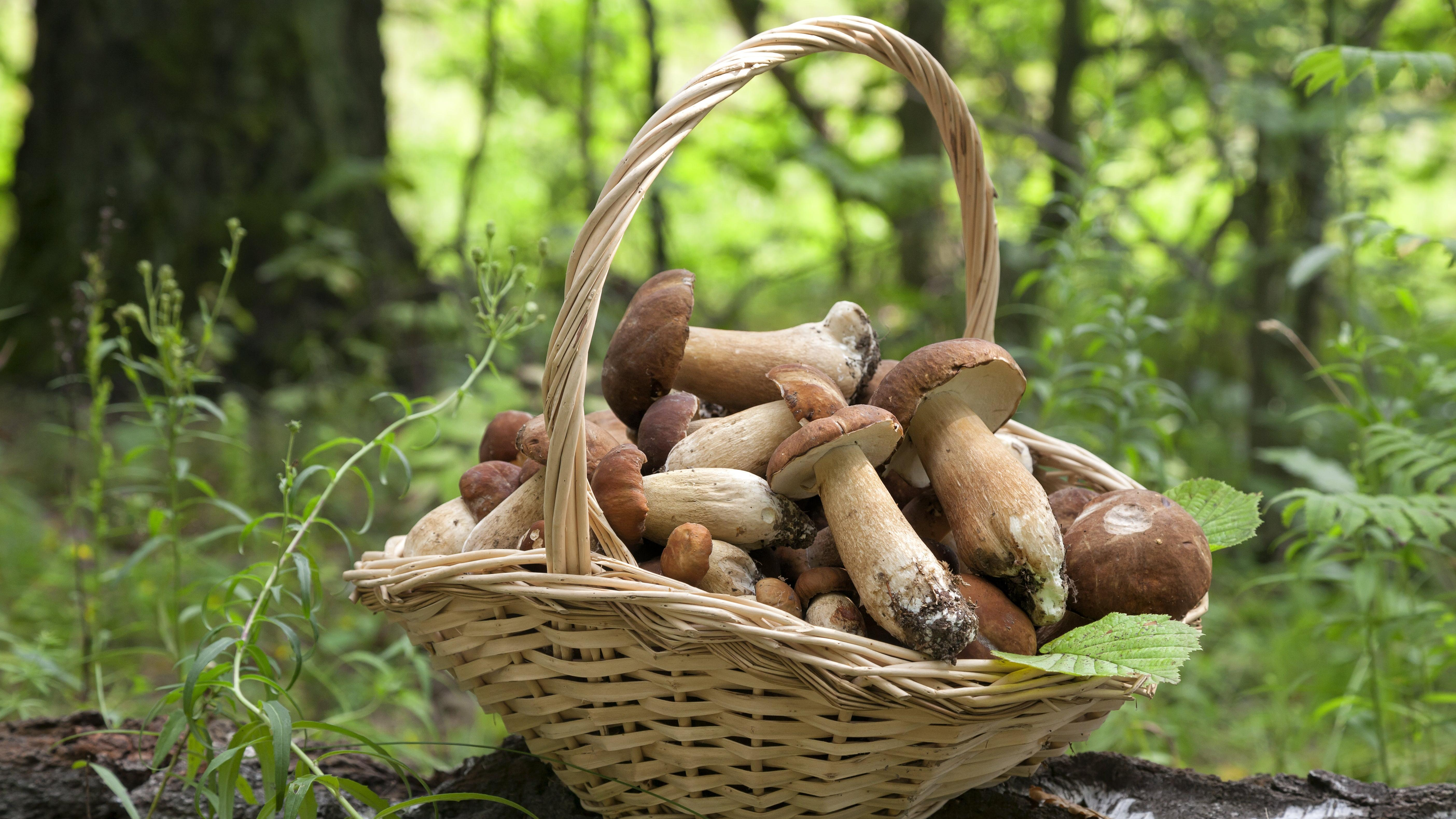The Future Of Foraged Foods
The pros and cons of buying ingredients found in the wild.
Aside from being a restaurant owner with one of the most progressive wage policies in the country, Bonnie Morales is also into foraging with local chef and foraging enthusiast Karl Holl. In an episode of The Migrant Kitchen, a food documentary series, Holl and Morales, along with her father, are shown foraging for wild mushrooms. "Some of the foraged ingredients of Portland are the best in the world," she gushes.
I may not be a foraging expert, but as a longtime Oregonian, I can confirm that Portland, Oregon (and the Pacific Northwest in general) has the perfect climate for foraging. Lush green forests of Mount Hood and Forest Park along with several others that line the Cascade Mountain Range are filled with an abundance of "wild" ingredients, ready to be picked. Whether it's huckleberries or mushrooms, you're likely to find something if you have the patience and the time to search for it.
Holl's cooking ethos is being connected to where his food comes from. This particular ethos permeates around here, as the Pacific Northwest bounty matches its majestic mountain ranges. It's no surprise that companies founded in the Pacific Northwest such as Cascade Organic have recently begun selling wild foraged mushrooms and huckleberries.
What are wild foraged products?
In his 2020 New Yorker article, staff writer Hua Hsu talks about how the world of fungi has shaped our cuisine and our environment. "The largest living organism on earth today is a fungus in Oregon just beneath the ground, covering about 3.7 square miles and estimated to weigh as much as thirty-five thousand tons," he wrote.
Earth911, a site dedicated to recycling and green living, also corroborates this fact. Those who are interested in foraging should stick to the West Coast, which includes northern California, Oregon, and Washington. Foraging is also big in Eastern Europe and Russia, most often as a survival mechanism rather than a lifestyle choice.
As a newbie, or mycophile as it's known in the foraging community, it may be in your best interest to start with mushrooms. Mushrooms are one of the most diverse groups of fungi out there and have been used as medicine for thousands of years. They're categorized according to their nature (edible, medicinal, toxic, or psychedelic) and according to iNaturalist, there are 31 edible and medicinal mushrooms available in the Pacific Northwest.
But if mushrooms aren't your thing, there are other options. Herbs, dandelions, pineapple weed, berries, and bittercress are available here in Oregon. However, there are foraging laws which vary by state. In Oregon, as long as you keep it a personal endeavor, no special permit is required. Washington allows up to two2 gallons per day for personal use while California's rules are much stricter—only specific areas are allowed to be foraged. Generally, foraging in California state parks is prohibited.
Foraging for wild mushrooms have been lauded by some as a restorative act, but what if you don't have time or the knowledge to forage? You go to companies like Cascade Organic and Woodland Cravings, the former a seller of wild, foraged products and the latter a tour guide for "wild" enthusiasts. Depending on what state you're in, you may need a permit, but perhaps it's a better idea to let the pros take care of it.
Scott Stimpson is one of those individuals. Aside from being the founder of Woodland Cravings, he's also very active on social media, often posting his finds on Instagram. He joins the ranks of Karl Holl and many others who find pure joy in searching for wild products and sharing it with their audience.
Foraging is a big deal. There's an online community and market where you can buy everything from wild, foraged mushrooms to nuts and seeds and pantry items. There's even a Mushroom Festival hosted by a local community college, bringing together mycophiles and other enthusiasts everywhere from around the world.
Should you buy foraged products from a company?
The short answer is yes. The long answer—it depends. There is a higher cost associated with purchasing wild foraged products versus regular ones. For example, a pound of chanterelle mushrooms from Fresh & Wild goes for $39.90 (does not include shipping costs), while a 1.5 oz. container of morel mushrooms from Cascade Organic is $20 before shipping.
Alternatively, you can go for a certification course which will give you the authority to forage and educate others. Mushroom Mountain, an online "ecotourism hotspot," offers courses on mushroom identification. The Centre of Excellence also has a foraging course. In the Midwest, the Midwest American Mycological Information (MAMI) has a mushroom certification program while Minnesota's Mycological Society also offers a certification program.
But if you're like me, you'll reserve wild mushrooms for special occasions only. Perhaps when you host a dinner for friends and family or when you have endless hours to kill. While there is no doubt many benefits to being out in nature, foraging is still a niche community with rules to abide by and expensive costs. The choice is up to you.
